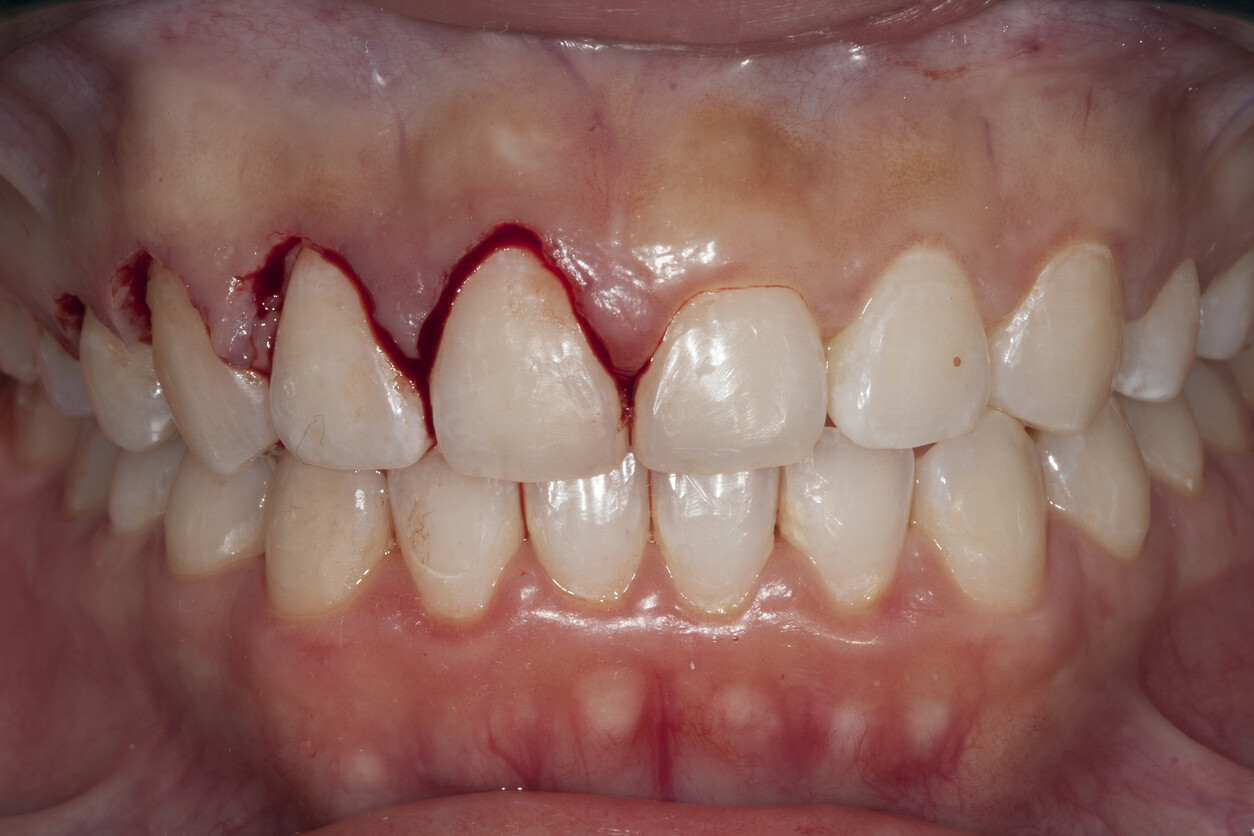
If these treatments do not work, the professional may recommend having a gingivectomy performed, as this is considered to be a highly effective means of treating the condition. In this guide, you will learn several important facts about the gingivectomy procedure.
What is Gum Disease?
Gum disease – which is often referred to as “periodontal disease” – is a condition that results in the inflammation and irritation of the gum line. It can progress rapidly to the point where the bone that provides support for your teeth is affected. It can be completely painless; however, most people experience some type of symptom.
Examples of symptoms that may be experienced include swollen, tender gums, receding gums, bad breath or a bad taste in the mouth, bleeding gums, the teeth may become loose, pus may start to develop around the teeth, and general discomfort.
What is a Gingivectomy?
A gingivectomy is a special type of dental procedure that result in the complete removal of a section of the gum tissue from in or even around a tooth or multiple teeth in order to treat the gum disease that has developed. In most instances, the dental professional that performs the procedure will be a periodontist.
This is a dentist that has undergoes special training in order to treat the gums and the conditions that have the capability of impacting the gums.
How is a Gingivectomy Performed?
When a gingivectomy is performed, the tissue that is diseased is carefully trimmed up and removed. The gum tissue that remains is then reattached by stitches. Immediately thereafter, the area is carefully cleaned by the introduction of saline and specially-designed mouth rinses. In order to numb the area and ensure patient comfort, the periodontist administers a local anesthetic that lasts for the duration of the procedure.
Once everything is complete, a surgical form of dressing is placed on the area and the patient is instructed to leave it in for approximately one week. The healing process may be enhanced by a prescription of antibacterial mouthwash.
Post-Gingivectomy
Once a few weeks to a month has passed, a patient who underwent a gingivectomy is able to return to their regular dental/oral health regimen. Periodic checkups will be required to ensure that the healing process is going well.
In most instances, these will occur once every three months. In some cases, they may be scheduled every six months. While at the checkup, the periodontist will carefully evaluate the area and then clean the mouth.
If you have gum disease and the issue is detrimentally impacting you, contact us today to schedule a consultation to determine if you are a good candidate for a gingivectomy.
